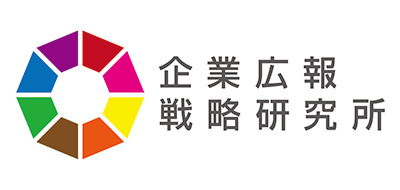This is the eighth installment in our series on the " First Survey on Corporate Public Relations Activities" conducted by the Corporate PR Strategy Institute targeting 479 listed Japanese companies. This time, we explain the fourth element of the "PR Octopus Model Analysis" – which breaks down corporate PR activities into "Eight PR Capabilities" – focusing on "Information Creation Capability."
The "Information Creation Capability" we focus on this time scored the lowest among the eight indicators used to assess corporate PR capabilities in the survey. Among the ten items in Figure 2, the highest-scoring item was "Preparing press materials about the company and its products/services" (40.3%). Next highest was "Preparing PR materials aligned with PR strategy" (37.6%), though both hovered around the 40% mark. The remaining eight items all scored below 30%. "Information Creation Capability" is the cornerstone of information dissemination. Why did this metric score the lowest?

*Percentage of 479 responding listed companies that indicated they meet the criteria for information creation capability. Asterisks indicate the top three items prioritized by the expert panel (numbers indicate ranking).
■ "Information Creation Capability" refers to what is commonly called creative ability
As explained in previous sections on "Information Gathering," "Information Analysis," and "Strategy Development " – the process of "gathering information, analyzing it, and creating strategy" – "Information Creation Capability" refers to the ability to edit, process, and express content aligned with strategy. In other words, it is the creative power to design key elements essential for stakeholder relationship building and translate them into actual information dissemination. The key point is "expression aligned with PR strategy."
Focusing on the item "Developing PR messages and stories aligned with the PR strategy," which the expert panel emphasized, we see that while the overall result is 27.1%, the scores for the companies grouped by overall PR capability rating [S/A/B/C](Note) are [S=64. 4%/ A=27. 2%/B=12. 7% / C=3. 1% ]. There is more than a twofold difference between S and A. This clearly shows that excellence in PR capability hinges on developing messages and stories based on a PR strategy.
(Note)The overall PR capability evaluation ranks responding companies into four tiers [S/A/B/C] based on the total score across all eight PR capability metrics, ordered from highest to lowest.
However, this "development of messages and stories" is quite challenging. It requires more than simply organizing collected information; key messages and key visuals must be established and used as pillars for PR activities. Despite nearly 40% (37.6%) stating they "prepare PR materials aligned with their PR strategy," the situation reveals that development has not been achieved.
■ The Meaning of "Information"
So, what is necessary for "Message and Story Development"?
Here, we focus on the term "information." While its etymology has several theories, one interpretation suggests it combines "情" (emotion) and "報" (report), where "情" represents human sentiment and "報" represents data or numbers. Following this, the creation of information—that is, creativity—must not forget two elements: emotional messages and stories that move people, and "data = logic."
■ "Words from Top Leadership" Also Boost Information Creation Capability
Another crucial point is the presence of the "storyteller" for messages and stories. In this survey, only 23.4% reported having "an internal or external system specializing in crafting top management messages," and a low 4.0% stated they "regularly conduct training to strengthen top management's presentation and communication skills." Yet, top executives fulfilling the role of storyteller is actually vital. We hope that top executives, as the communicators of public relations strategy, will move people and foster positive relationships by delivering logical data that sticks in people's minds while also speaking to them emotionally.
About the Corporate Communication Strategic Studies Institute
The Corporate Communication Strategic Studies Institute (CSI) is a research organization within Dentsu Inc. Public Relations. It collaborates with experts in corporate management and public relations (including university professors and researchers) to conduct surveys, analysis, and research on corporate communication strategies and systems.



